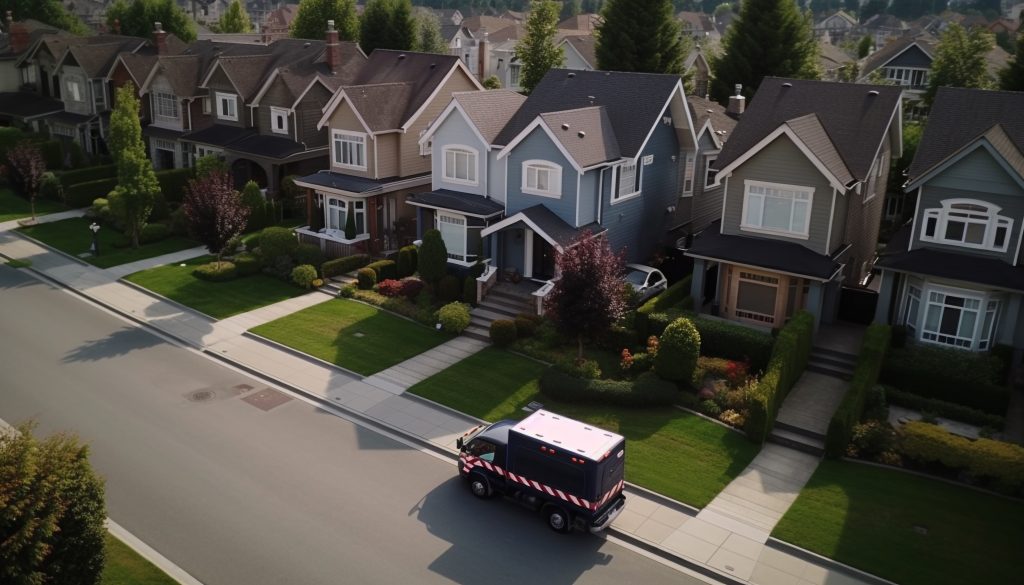In the wake of the 2020 global shift, small-town living has transformed from a nostalgic idea into a compelling and practical lifestyle decision. As remote work became normalized and urban housing prices continued to soar, many individuals and families started reconsidering the long-standing allure of big city life. This trend hasn’t just plateaued—it’s accelerating. Small-town living after 2020 isn’t just about affordability; it’s about space, flexibility, and a change in how people define quality of life.
With lifestyle preferences evolving, the rise of small-town living is now influencing real estate markets, community development, and long-term urban planning across and beyond. Here’s a closer look at why this shift is happening, who’s driving it, and what it means for the future of housing.

1. What’s Fueling the Shift?
Several core factors are contributing to the growing preference for small-town life:
Remote Work Permanence
The single largest catalyst for this shift has been the widespread adoption of remote work. According to a 2023 Gallup survey, approximately 28% of full-time employees now work exclusively from home, with an additional 39% operating under a hybrid model. The ability to work from anywhere has removed a long-standing barrier: needing to live near an office.
Housing Affordability
In major cities like San Francisco, New York, and Los Angeles, the median home price remains unattainable for many first-time buyers. In contrast, smaller towns offer more square footage, yard space, and community infrastructure at significantly lower prices. For example, a Zillow housing report noted that the median home value in smaller metros increased by over 15% between 2021 and 2023, a sign of rising demand.
Quality of Life
People are increasingly prioritizing mental health, access to nature, and work-life balance. Small towns often provide quieter environments, less traffic, and closer-knit communities. These elements became particularly valuable after the lockdowns and isolation of the early pandemic period.
2. Who Is Moving and Why?
Young Families
The cost of raising children in urban areas—childcare, housing, schooling—has pushed many young parents to seek out small-town alternatives. The appeal lies not only in cost savings but also in safety, school ratings, and community involvement.
Retirees
Many retirees are cashing in on homes in urban or suburban areas and relocating to smaller towns that offer a slower pace and lower living costs.
Remote Professionals
Tech workers, freelance creatives, and entrepreneurs who no longer rely on being in a specific city are among the first to experiment with relocating to smaller, more affordable towns.
3. Small-Town Real Estate Trends in 2025
The shift toward small-town living isn’t just about migration—it’s reshaping real estate in tangible ways.
Growth in Build-to-Rent Developments
Developers are now targeting smaller markets for build-to-rent housing, a trend traditionally seen in suburban sprawl. These communities offer flexible, modern homes for people who aren’t ready or willing to buy but want out of dense cities.
Appreciation in Home Values
Small towns that were once overlooked are now seeing strong price appreciation. In Montana, Idaho, and parts of the Midwest, demand has outpaced supply, causing local real estate markets to heat up significantly. Realtor.com reports that home inventory in towns with populations under 100,000 dropped by nearly 20% in 2024 compared to pre-pandemic averages.
Infrastructure Investment
To keep up with growth, small towns are investing in better broadband, healthcare facilities, and schools. Federal and state infrastructure grants, especially those tied to digital connectivity and transportation, are being directed to these areas to attract and retain residents.
4. Pros and Cons of Making the Move
While the trend is strong, small-town life isn’t for everyone. Here’s a quick breakdown:
Benefits:
-
Affordability: Lower property taxes and purchase prices.
-
Space: Larger lots, more green space, and less crowding.
-
Community: Easier to build connections and contribute locally.
-
Safety: Generally lower crime rates.
Challenges:
-
Limited Job Markets (for those not remote): Outside of remote work, options may be sparse.
-
Healthcare Access: Fewer providers and specialists.
-
Entertainment & Services: Limited shopping, dining, and cultural events.
-
Public Transit: Car dependency is often required.
5. Real Estate Strategies for Buyers Eyeing Small Towns
If you’re considering a move, keep these tips in mind:
-
Research Local Zoning and Development Plans
A quiet town today may be a growing hub tomorrow. Look into future development to avoid surprises. -
Check Internet Speeds
Remote work requires reliable internet, and not all rural areas are up to speed yet. -
Rent Before You Buy
Consider a 6-12 month rental before committing. This gives you time to evaluate if the slower pace and infrastructure meet your expectations. -
Visit in All Seasons
Some towns feel charming in summer but can be isolating in winter. Make multiple visits if possible. -
Connect with Local Realtors
Agents with local expertise can point out hidden gems or warn you about problematic neighborhoods or zoning issues.
6. The Long-Term Outlook
The rise of small-town living after 2020 shows no signs of slowing. With remote work staying mainstream and housing affordability continuing to challenge urban areas, more Americans are exploring alternatives to city life.
This shift could also inspire new models of town development—intentional communities designed around flexibility, sustainability, and digital infrastructure. From adaptive reuse of old industrial areas to new eco-friendly developments, the blueprint for modern small-town growth is already in motion.
Municipal governments are taking note, too. Many are launching initiatives to attract remote workers with tax breaks, relocation incentives, and community grants. Cities like Tulsa, Oklahoma and Bentonville, Arkansas have led the charge, offering thousands of dollars to entice new residents—and it’s working.
Conclusion
What was once viewed as a lifestyle downgrade is now being reimagined as an intentional upgrade. For many, small-town living isn’t about escape—it’s about choice. As the real estate landscape evolves, these quieter communities are carving out a louder voice in the national conversation.
Small towns may no longer be “the next big thing”—they’re simply becoming the next smart move.
This shift reflects more than just personal preferences; it signals a broader transformation in how people define quality of life. With remote work unlocking geographic flexibility, families and professionals are choosing locations based on what they value—space, affordability, safety, and a sense of community—rather than proximity to urban job markets. As housing prices continue to rise in major metro areas, small towns offer an appealing alternative where homeownership, outdoor access, and community involvement are more attainable.
Moreover, small towns are adapting. Many are investing in digital infrastructure, opening coworking spaces, and fostering local entrepreneurship to attract and retain talent. The result? These communities aren’t just surviving—they’re thriving in a post-urban economy.
Reference
- Decatur, IL , Weirton, WV, Duluth, MN saw double-digit home value growth — New York Post
- Zillow. (2023). 2023 Housing Market Report. https://www.zillow.com
- June 2025 inventory up but below pre‑pandemic levels — Realtor.com’s June Report









